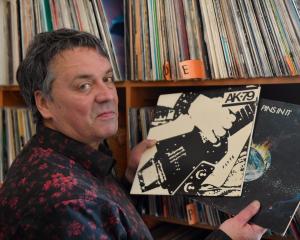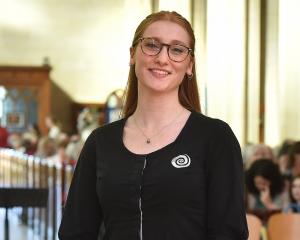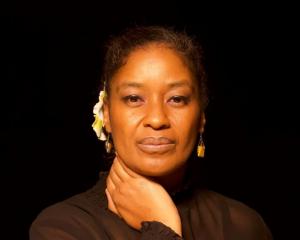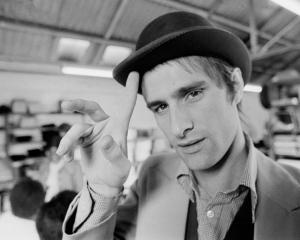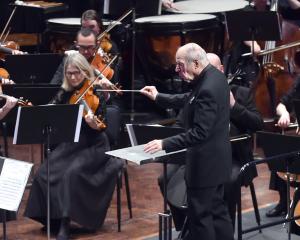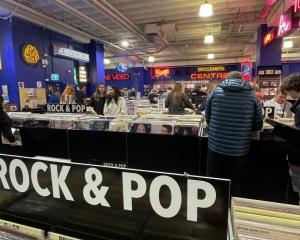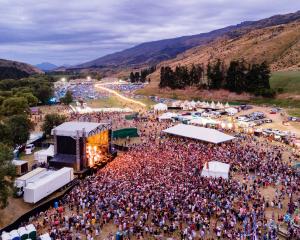
Journalist, commercial radio pioneer, band manager and music lover — David Gapes kicked open many doors.
He fought a state-owned monopoly and won. He brought rock’n’roll and pop music to our radio waves and managed one of New Zealand’s premier acts.
In 1965 David Gapes, who was born in Wellington 23 years earlier, was a journalist at NZ Truth. He had a no-nonsense approach to investigating and wasn’t shy about asking questions of authority figures.
At 23, Gapes was also part of the rock’n’roll generation. Elvis Presley and The Beatles had changed the course of music forever.
The Beatles had visited New Zealand in 1964 and New Zealand had its own music stars — Johnny Devlin, Max Merritt and the Meteors, Ray Columbus and the Invaders.
But broadcasting was still very much controlled by the government, and commercial radio licences were not available. Only half an hour of pop music was broadcast during the week and the radio waves were full of racing commentaries. Change was well overdue.
Gapes began his journalism career in 1959, working for The Evening Post in Wellington for three years and at NZ Truth in Auckland for a short time, before heading to Sydney for two years at The Daily Mirror.
While in Australia he heard of attempts to set up private radio in the northern hemisphere — an unsuccessful broadcast off the Scandinavian coast and Radio Caroline in the English Channel.
When he returned to Wellington in 1965, Gapes was struck by how New Zealand radio broadcasting was still stuck in the 1930s. He was sure that the government would never agree to a land-based radio licence — the New Zealand Broadcasting Service (NZBS) had been set in up the 1930s and was considered by the government to be an essential communications medium.
And even though the NZBS was replaced by a supposedly more independent organisation with the creation of the New Zealand Broadcasting Corporation (NZBC) in the early ’60s, the new organisation was in no hurry to allow competition by handing out private licences — the NZBC was effectively a state-run monopoly.
Although he had no technical or business knowledge on how to set things up, Gapes decided a pirate radio station was the way to stick it to the man.
Over drinks at a Willis St pub he discussed things with another journalist, Australian Bruce Baskett, who was working for The Dominion newspaper.
Baskett was prepared to put in some money, and after agreeing that Auckland — with its larger population — would be a better city for the venture, the pair decided they would give up their jobs at the end of 1965 and head north.
Gapes soon came up with a plan to moor an internationally registered vessel outside the then three-mile (4.8km) limit of New Zealand’s territorial waters. Consulting a map, he found there was a small triangle of international water between Great Barrier and Little Barrier Islands and the Coromandel Peninsula.
Mooring there meant they would be a mere 80km from Auckland city and could potentially reach a large audience.
The rest of the year went by with Gapes and his wife Wendy saving as much money as they could while they consulted with technical experts — including radio enthusiast Denis "Doc" O’Callahan and a marine surveyor to help find a suitable vessel. They moved to Auckland over the summer of 1965-66, where Gapes canvassed potential advertisers and gained more confidence an independent station would attract advertisers.
As the months went by, they ironed out other technical problems, including planning to use pre-recorded tapes to broadcast shows to get around the problem of playing records on a swaying boat.
But their finances were dwindling and it was hard to attract investors, so a newspaper story written by Adrian Blackburn, published on Easter Saturday, April 9, 1966, in The New Zealand Herald was part of their plan to attract more capital and public support.
Two ex-NZBC employees, Derek Lowe and Chris Parkinson, were shocked to read the story. They too had been planning a private radio station, and the subject had been in their minds for several years. When they joined forces, Parkinson, a golden-voiced announcer and studio technician, and Lowe, who had set up a commercial and jingle production company, were a perfect complement to the venture. Other announcers, including future promoter Ian Magan, would soon sign on.
Plans to set sail and begin broadcasting were met with many setbacks — after towing MV Tiri from Gisborne to Auckland for a refit and transmitter installation, the Marine Department kept finding compliance reasons to knock them back. Several attempts to set sail were stymied; the authorities took them to court and lost.
On Sunday October 23, 1966, public support swung massively their way when the police tried to stop Tiri entering Waitemata Harbour by lowering the drawbridge on Auckland’s western viaduct so the vessel couldn’t get through. Gapes and his fellow pirates sat in harm’s way under the jaws of the drawbridge so it couldn’t be lowered, and eventually Tiri was under way. But Gapes and his crew were arrested and loaded on the police launch Deodar for a trip back to shore and a night in the cells.
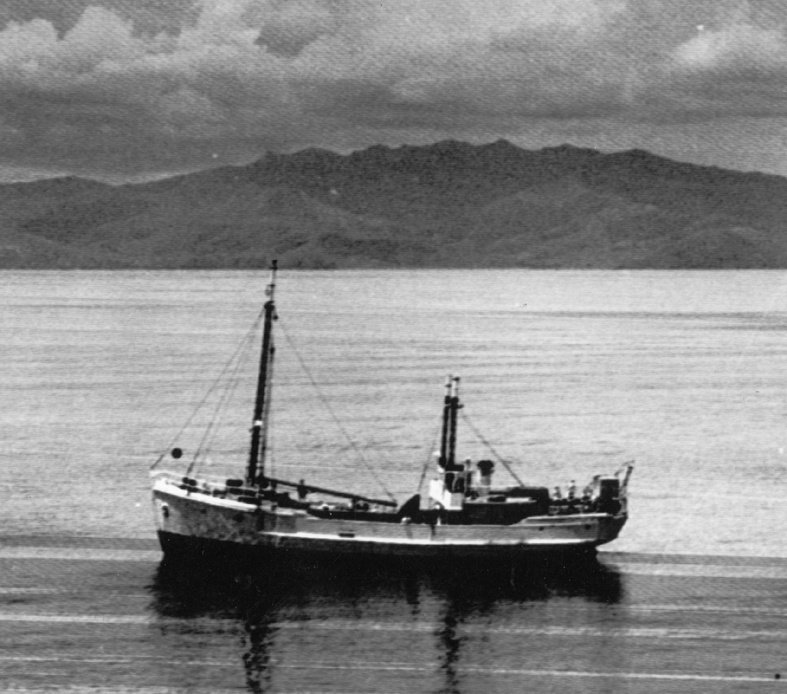
With a format aimed at a young audience, the station played pop and rock’n’roll hits. They kept the playlist fresh, relying on a network of airline pilot friends to bring in new releases from overseas, playing local releases and showing support for New Zealand recording artists. Public support and audience numbers grew.
Surviving wild conditions at sea, a shipwreck of Tiri (they continued with a new vessel, Tiri II), the death of announcer Rick Grant at sea, heavy-handed political opposition and financial hardship for four years, Radio Hauraki was eventually granted a licence. On September 26, 1970, it became the first privately owned commercial station to broadcast legally in New Zealand since the 1930s.
David Gapes stayed on as an executive at Radio Hauraki until 1977. He dabbled in other ventures, including the birth of Hot Licks, a monthly rock music magazine co-founded in 1974 with Kerry Thomas of Direction Records and edited by Roger Jarrett. Hot Licks lasted 27 issues and ceased publication in 1976.
By 1977, Radio Hauraki was a far more corporate affair. Gapes was forced to sell his shares in Radio Hauraki and move on. His next adventure would be as manager of Hello Sailor.
While he hadn’t managed bands before, he had shown plenty of support for local artists. When Headband, fronted by singer Tommy Adderley, released their second album Rock Garden in 1975, Gapes wrote the liner notes.
In late 1977 Gapes met at his Birkenhead home Hello Sailor members Graham Brazier, Dave McArtney and Harry Lyon. With a loyal following and having completed their debut album, they were a band on the way up and urgently needed management.
Gapes and Hello Sailor were the catalyst for a change in booking strategy at the Gluepot in Ponsonby, Auckland, where original music wasn’t regarded as important as cover acts. Since 1967 a band called The Radars, comprising blind and near-blind backing musicians, had held a residency. They had moved aside in 1976 but cover bands were still the norm. Gapes pushed the bookers hard to get Hello Sailor into the big room and they were sceptical at his prediction that they would fill the room. They filled the room three nights in a row and ushered in a new booking policy, with acts such as Citizen Band, Th’ Dudes, and Mi-Sex soon to follow in their path.
The Rum & Coca-Cola tour of 1977 was "hugely successful by local standards", John Dix wrote in Stranded in Paradise.
"Grossing over $30,000, it pioneered the pub rock circuit of the late-’70s, as well as introducing the era of the big PA, the lighting rig, the crew. With Gapes at the helm, Hello Sailor brought a new level of professionalism to New Zealand rock."
After recording their second album Pacifica Amour in 1978, Gapes and Hello Sailor headed for Los Angeles. Through his contacts, he was able to secure a rental property — at 8888 Hollywood Hills Dr — and get the band working visas for six months. The band played and partied hard, and Gapes pushed them as hard as he could.
Hello Sailor did get gigs in Los Angeles. The highlights included playing at the Troubadour for a music industry crowd, and opening for the Knack at the Whisky A Go Go in front of recording industry movers and shakers. The Doors’ Ray Manzarek joined them onstage.
But the elusive recording contract didn’t come through. Time was running out, and so was the cash. Gapes had taken a gamble on Sailor and subsidised their existence there, using his own money. He wanted to hold out a bit longer, but it wasn’t to be.
The band stayed in LA from August 1978 to February 1979. As the money ran out, David Gapes and Hello Sailor went their separate ways.
After returning to New Zealand and taking on Phillip Mills as their new manager, Hello Sailor headed for Australia, a plan that Gapes had always rejected.
Back in New Zealand, Gapes and old friend Tommy Adderley joined together in a cafe/club venture, The Green Door (aka Tommy’s Place and the Greasy Spoon). But Adderley’s old drug habits brought persistent inquiries from a patron and he gave in to his demands in order to get him off his back. The patron turned out to be an undercover cop. In 1980, together with Gapes, he was arrested for supplying morphine and allowing a club premises to be used for drug use. Both Adderley and Gapes were convicted and served prison sentences.
Gapes eventually returned to journalism, working at the Star in Auckland during the 1980s. He was the first editor of film and television industry magazine OnFilm, and later the editor of AdMedia, a long-running trade magazine for the advertising and media industries.
It was a role that fitted like a glove for Gapes, who had the vision to bring advertising to radio waves and establish a commercial presence with Hauraki in the 1960s, and had gained respect from senior professionals in the media and advertising industries.
After AdMedia wound up with the decline of print magazines, Gapes joined the march to online media, editing M+AD, an online news resource for the advertising and media industries.
David Gapes was a true rock’n’roll pioneer and one of the original Hauraki "Good Guys". In founding Radio Hauraki he set New Zealand’s radio waves free, expanded the nation’s musical horizons and helped to promote many of New Zealand’s performers, including taking a shot on one of our greatest acts, Hello Sailor.
In 2019 he was named Officer of the New Zealand Order of Merit in the Queen’s Birthday Honours list for services to broadcasting.
David Gapes died on March 8, aged 81.
By Steven Shaw, Audioculture

